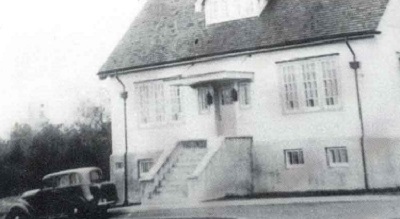
|
Spectrum Management - From the Early Years to the 1990s |
|
Page 14 of 26 Spectrum Surveillance and Monitoring - Other regions |
|
Elsewhere in Canada On the subject of the daily work at the Ottawa monitoring station and its statistics, Ed Davey continues:
Afterward the war, a network of monitoring stations was gradually established throughout the country.
A new Point Grey station in Vancouver was put into service in 1950, in a back room of the coast guard station. A technician from Ottawa installed a General Radio frequency measurement system and an RCA AR88LF receiver. At first, only frequencies under 30 MHz were monitored and VHF (Very High Frequency) was added later.
Vern Reid was the operator-in-charge and the service was provided only on weekdays, except when there were special work assignments. This station was moved to Ladner in 1957, to land leased from the COTC. Reid remained in charge, with four operators.
The station at Wetaskiwin, Alberta, was established in 1949 and Lloyd G. Cope was in charge until 1955 when he was replaced by Ed Leaver.
In 1956, Ed Davey, who no longer liked working at the head office, became the officer-in-charge of the Almonte station. He was succeeded by Albert Berry, Ron Powers, Ross Ritchie and Peter Dalton.
In 1957,
V.J. Reid was in charge of the Vancouver (Point Grey) station; it was eventually moved to
Ladner.
That same year, the Department's certification laboratory found it necessary to acquire a vehicle for monitoring purposes. A trailer was equipped with a Schomandl frequency measurement system.
Unfortunately, the laboratory was not authorized to buy a tractor-truck powerful enough to pull the weight of the trailer, so Lou Colpitts and Ed Leaver often found themselves being ticketed because they were travelling too slowly on Ontario's highways.
The station at Port Arthur (Lakehead), Ontario, was established in 1957. The one at Acton was put into service to replace the station at Strathburn (an old site acquired from the CBC) where reception was becoming more and more subject to interference.
In the 1970s, thanks to adequate budgets and especially funding provided by our American
neighbours who needed to extend a DF baseline, a few direction finding facilities were set
up in the country. Ron Powers relates:
|
|
Spectrum Management - From the Early Years to the 1990s |







 Lloyd set up a new station at Melville, Saskatchewan, in 1958 and
C.W. Colpitts
accepted the position of officer-in-charge.
Lloyd set up a new station at Melville, Saskatchewan, in 1958 and
C.W. Colpitts
accepted the position of officer-in-charge.
 In 1961,
In 1961,
 A new station was also established at Fort Smith in the Northwest Territories by
Lou Colpitts and Jim Dunston.
A new station was also established at Fort Smith in the Northwest Territories by
Lou Colpitts and Jim Dunston.